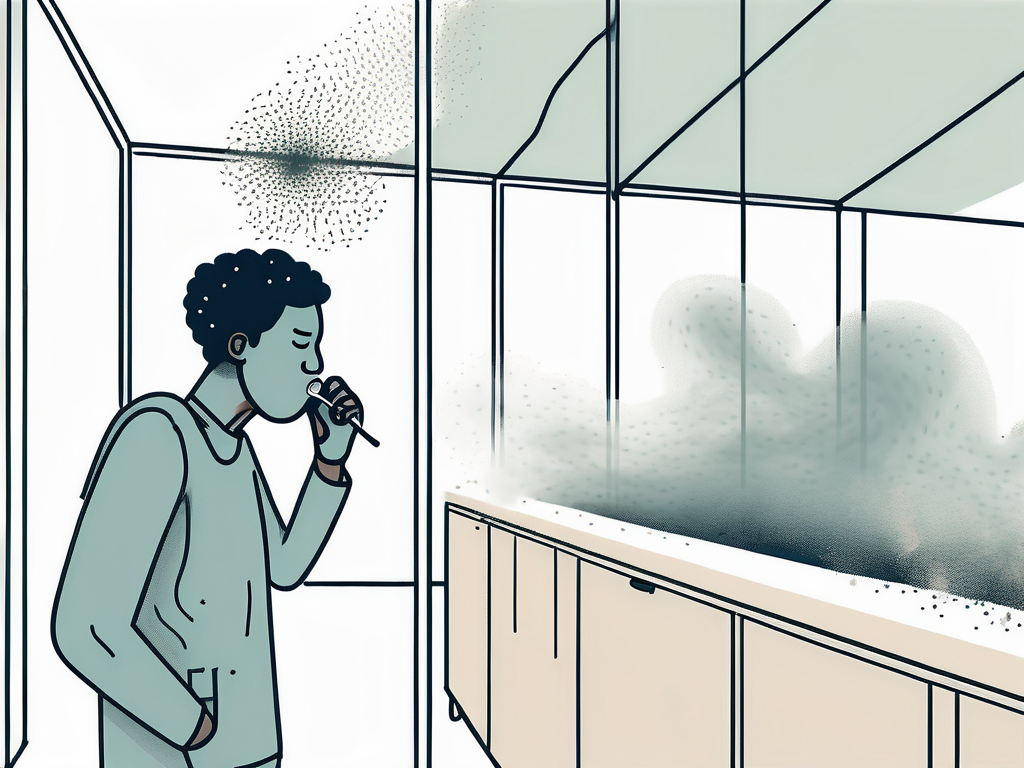Indoor air quality is a crucial aspect of our overall health and well-being. The air we breathe indoors can have a significant impact on our health, productivity, and quality of life. Therefore, understanding and assessing indoor air quality is of utmost importance. In this article, we will explore the importance of indoor air quality assessment and discuss various aspects related to it.
Understanding Indoor Air Quality
Indoor air quality refers to the quality of air within buildings and structures, specifically as it relates to the health and comfort of the occupants. It is influenced by various factors such as ventilation, temperature, humidity, and the presence of pollutants.
Indoor air quality is a measure of the air’s cleanliness and can significantly impact our respiratory health. Poor indoor air quality can lead to various health issues, including respiratory problems, allergies, asthma, and even more severe conditions. Therefore, it is crucial to assess and improve indoor air quality to create a healthy living and working environment.
What is Indoor Air Quality?
Indoor air quality refers to the level of pollutants, contaminants, and other factors within the indoor environment that may affect the health and comfort of the occupants. These pollutants can be anything from chemicals released by building materials and household products to outdoor pollutants such as pollen and dust.
To assess indoor air quality, various parameters are considered, including the levels of carbon dioxide (CO2), volatile organic compounds (VOCs), particulate matter (PM), and humidity. These factors are measured and analyzed to determine the overall air quality and identify potential issues.
Factors Affecting Indoor Air Quality
Indoor air quality can be influenced by several factors. Some of the most common factors include:
- Poor ventilation: Inadequate ventilation can result in the buildup of pollutants and stagnant air, compromising indoor air quality.
- Contaminants: Pollutants such as dust mites, mold, pet dander, and chemicals released by products contribute to poor indoor air quality.
- Humidity: High humidity levels can promote the growth of mold and bacteria, negatively impacting indoor air quality.
- Poor maintenance: Inefficiently maintained HVAC systems and inadequate cleaning practices can lead to the accumulation of pollutants.
Another factor that can affect indoor air quality is the presence of volatile organic compounds (VOCs). VOCs are chemicals that can be emitted from various sources, such as cleaning products, paints, and furniture. These compounds can have both short-term and long-term health effects, including eye, nose, and throat irritation, headaches, and even damage to the liver, kidneys, and central nervous system.
In addition to VOCs, particulate matter (PM) is another significant factor that can impact indoor air quality. PM refers to tiny particles suspended in the air, such as dust, pollen, and smoke. These particles can be inhaled and can cause respiratory issues, especially for individuals with pre-existing conditions such as asthma or allergies.
Furthermore, the temperature of the indoor environment can also influence air quality. Extreme temperatures, whether too hot or too cold, can lead to discomfort and affect the overall well-being of the occupants. It is essential to maintain a comfortable temperature range to ensure optimal indoor air quality.
The Impact of Poor Indoor Air Quality
Poor indoor air quality can have significant consequences on our health and well-being. The following are some of the key impacts:

Health Risks Associated with Poor Indoor Air Quality
Prolonged exposure to poor indoor air quality can lead to a range of health issues. Respiratory problems, allergies, asthma attacks, and irritation of the eyes, nose, and throat are common consequences. Long-term exposure may even contribute to the development of more severe conditions such as respiratory infections and lung diseases.
Did you know that indoor air pollutants can come from various sources? These include tobacco smoke, household cleaning products, building materials, and even outdoor pollutants that make their way inside. It’s important to be aware of these sources and take necessary measures to minimize their impact on indoor air quality.
Furthermore, indoor air pollutants can also trigger or worsen existing health conditions, including cardiovascular disease and various types of cancer. This highlights the importance of assessing and improving indoor air quality, not just for preventing respiratory issues but also for safeguarding overall health.
Economic Consequences of Poor Indoor Air Quality
The impacts of poor indoor air quality are not only limited to health but can also have economic implications. Decreased productivity, increased sick leave, and healthcare costs associated with indoor air quality-related issues can significantly affect businesses, schools, and other institutions.
Imagine a scenario where employees are constantly exposed to poor indoor air quality. This can lead to decreased concentration, fatigue, and discomfort, ultimately hampering their productivity. By investing in measures to improve indoor air quality, businesses can create a healthier and more conducive work environment, boosting employee morale and productivity.
Moreover, poor indoor air quality can reduce the lifespan of building materials and equipment, leading to increased maintenance and replacement costs. For example, excessive moisture in the air can cause mold growth, which not only affects the health of occupants but also damages walls, ceilings, and other surfaces. Investing in indoor air quality assessment and improvement measures can help prevent these economic consequences, saving money in the long run.
It’s clear that poor indoor air quality has far-reaching effects, impacting both our health and the economy. By understanding these consequences and taking proactive steps to improve indoor air quality, we can create healthier, more productive, and cost-effective environments for all.
Methods of Indoor Air Quality Assessment
To ensure a healthy indoor environment, it is necessary to assess the quality of the air we breathe. Several methods can be employed to determine the air quality levels. Let’s explore two common approaches:

Professional Indoor Air Quality Testing
Professional indoor air quality testing involves hiring experts who use specialized equipment and techniques to evaluate various aspects of indoor air quality. These professionals collect air samples, measure pollutant levels, and assess ventilation systems to provide a comprehensive assessment. Their expertise ensures accurate analysis and recommendations for improvements.
Additionally, professional indoor air quality testing may include assessments for specific pollutants such as mold spores, volatile organic compounds (VOCs), and radon gas. These tests can help identify hidden sources of indoor air pollution and guide targeted remediation efforts to improve air quality.
DIY Indoor Air Quality Assessment Tools
Alternatively, there are several DIY indoor air quality assessment tools available in the market. These devices allow individuals to monitor and evaluate indoor air quality independently. Examples include air quality monitors that measure pollutants, humidity meters, and carbon dioxide detectors. While these tools provide a basic understanding of air quality, professional assessment is recommended for a more thorough evaluation.
DIY indoor air quality assessment tools are becoming increasingly popular for homeowners who want to take a proactive approach to monitoring their indoor environments. These tools often come with user-friendly interfaces and real-time data tracking, empowering individuals to make informed decisions about their indoor air quality.
Improving Indoor Air Quality
Once indoor air quality issues are identified, it is crucial to take effective measures to improve the situation. Here are some strategies to enhance indoor air quality:
Ventilation and Air Circulation
Proper ventilation and air circulation play vital roles in maintaining good indoor air quality. Opening windows to allow fresh air in, using exhaust fans in kitchens and bathrooms, and ensuring the correct operation of ventilation systems are all crucial steps. Ventilation helps remove stagnant air and dilutes indoor pollutants, contributing to improved air quality.
Regular Maintenance of HVAC Systems
Maintaining heating, ventilation, and air conditioning (HVAC) systems is essential for optimal indoor air quality. Regular inspections, filter replacements, and cleaning are necessary to prevent the accumulation of pollutants. Additionally, professional HVAC maintenance can help identify and address any issues affecting air quality.
Use of Air Purifiers and Filters
Air purifiers can be used to remove pollutants and improve indoor air quality. These devices filter out particles and allergens, including dust, pollen, pet dander, and mold spores. Additionally, using high-quality HVAC filters can help trap airborne pollutants and improve overall air quality.
The Role of Building Design in Indoor Air Quality
Building design has a significant impact on indoor air quality. Consideration of certain factors during the design phase can contribute to a healthier indoor environment. Let’s explore some aspects:

Sustainable Building Materials and Indoor Air Quality
Using sustainable and low-toxicity building materials can help prevent the release of harmful pollutants into the indoor environment. Materials such as VOC-free paints, formaldehyde-free wood products, and low-emission carpets can contribute to improved indoor air quality. Employing sustainable building practices helps create healthier indoor spaces.
The Impact of Building Layout on Air Quality
Building layout and design can affect indoor air quality by influencing airflow patterns and ventilation effectiveness. Proper placement of windows and vents, along with the consideration of natural airflow, can enhance overall air circulation. Additionally, careful planning of spaces that generate pollutants, such as kitchens and bathrooms, can help prevent contamination of other areas.
In conclusion, indoor air quality assessment is essential for creating a healthy and comfortable indoor environment. Understanding the factors that affect indoor air quality and addressing any issues can significantly improve our respiratory health and overall well-being. Whether through professional testing or DIY tools, assessing indoor air quality is a crucial step in ensuring a safe and healthy indoor space. By implementing the necessary measures to enhance indoor air quality, such as ventilation, maintenance, and the use of air purifiers, we can create a conducive environment for both work and leisure. Additionally, considering building design and sustainable materials during the construction or renovation process can further contribute to maintaining good indoor air quality. Therefore, it is vital to prioritize indoor air quality assessment and improvement as part of our overall health and environmental consciousness.




